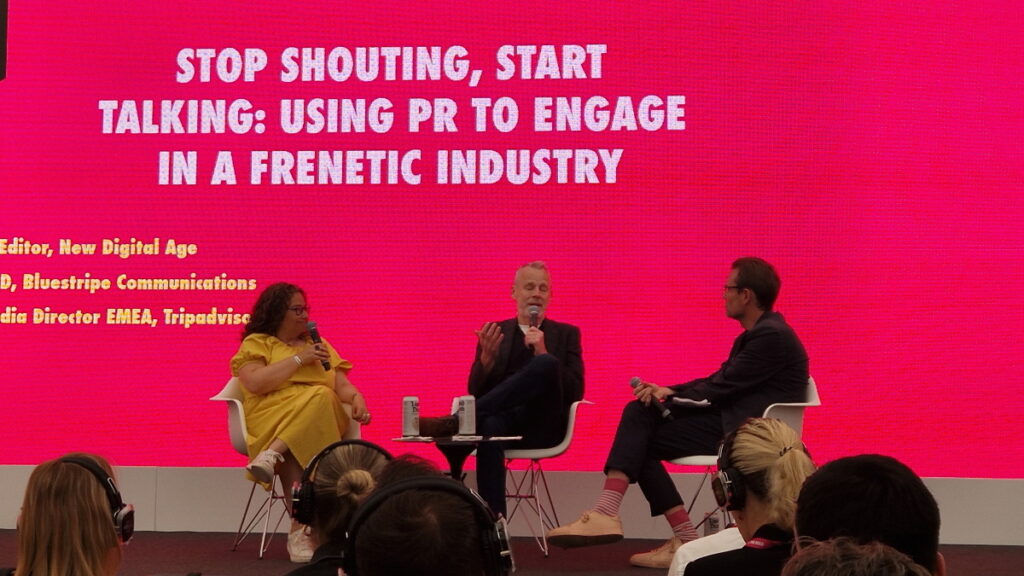Public relations (PR) and communications are one of the most important cogs involved in growth and staying power of any business, helping to increase brand recognition and support the overarching marketing strategy of a company, among many of other functions.
Despite its importance, particularly within the world of advertising and marketing, it can be difficult to know how to engage with PR in the fast-moving, hectic world.
“It really comes down to one fundamental thing and that is storytelling. We chat to a lot of clients and prospects and no one is unique. There is a lot of noise and you need to cut through that noise,” said Lydia Oakes, MD at Bluestripe Communications, speaking at Mad//Fest London 2024. “You have to be able to know your own story to then be able to communicate it. And that’s about having a very clear narrative and telling that in every element of your owned channels, your paid channels, and doing that in a consistent way.”
Getting your relationships in order
Already a very well-known travel platform, Tripadvisor realised during the pandemic that it had to begin exploring B2B PR and how to get this story across better to advertisers, having previously only engaged in B2C PR.
There was a realisation that with nobody travelling, there was no incentive for many travel-focused brands to advertise on the platform, so it needed a way to engage with a wider range of potential partners.
“Prior to Covid, we didn’t really need to do B2B PR. We were very lucky. We had a very loyal audience that wanted to travel. We kind of existed in this vacuum. B2C PR, yes. B2B, no need for it,” said Justin Reid, Media Director EMEA at Tripadvisor. “We went from not needing any voice to go out in the marketplace to ‘hang on a minute. No one’s travelling. How an earth can we monetise our audience?’ We realised that we needed to start talking to a much broader, not just audience, but a broader framework of partners.”
A part of finding that audience, and one of the factors that PR is essential to, is getting out into B2B press. This means forming relationships between journalists and spokespeople from businesses – relationships which PR professionals facilitate.
At the heart of this relationship is “trust between the journalist and the spokesperson,” according to Oakes. The best PR professionals have spent a number of years establishing and maintaining relationships with journalists, who are “reliant on being given honest information, and being given it in a timely manner.”
Where many young PR professionals fall short and often damage this relationship with journalists is in not respecting their time, bombarding them with follow-up calls and emails.
“Journalists have less time as well. So, when you’re talking to them, make it worthwhile; make it matter,” said Oakes. “You cannot abuse a journalist’s time like that. They don’t have that and they’re not going to answer you, they’re not going to pick up the phone. So, it’s about establishing mutual respect and building relationships and understanding that journalists don’t have to cover you.”
What’s in a message?
Where PR is also very effective is in ensuring that, beyond getting words on/in various publications, businesses are getting in front of the audiences that matter most to through events – whether those are large-scale ones like Mad//Fest or smaller, bespoke ones.
“It’s all about the quality of not just the audience, but the quality of the time you spend with people in that audience and getting your message across,” said Reid.
This message, and the way it is distributed – whether that’s via events or through publications – is incredibly important. And the ultimate victory of any activity is getting external sources to discuss your business.
“It’s not enough to say ‘we are doing this, you need other people to say ‘they are doing that’,” said Reid.
*Tripadvisor is a client of Bluestripe Communications
**Bluestripe Communications is owned by Bluestripe Group, publisher of NDA












